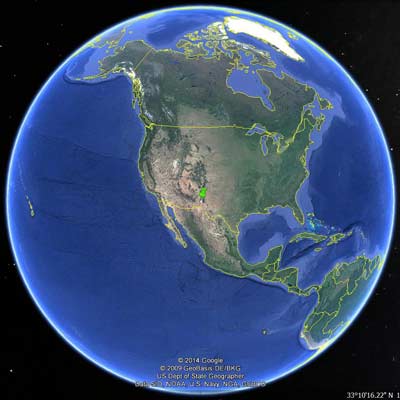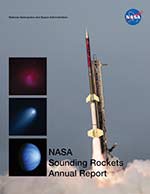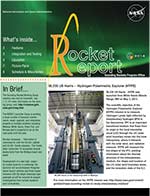
- Mission
- Vehicle
- Launch
- Photos
36.299 DR Terrier-Black Brant was launched from White Sands Missile Range, NM on February 25, 2015. The Department of Defense’s Space Test Program, based at Kirtland Air Force Base in Albuquerque, New Mexico, flew a Black Brant IX rocket which carried a payload designed by scientists and engineers from the Air Force Research Laboratory’s Space Vehicles Directorate also at Kirtland Air Force Base. The launch vehicle, which was designed to reach an altitude over 250 km, released small amounts of ionizable vapor at multiple locations near the solar terminator to better understand chemical and photochemical processes responsible for the formation of the Earth’s ionosphere. The plasma source material diffused through the near-vacuum of space at ionospheric altitudes to create a large pink cloud over the White Sands launch site which could be seen from Texas to Nevada.
The ionosphere is a region of the upper atmosphere, from about 85 km to 600 km altitude, characterized by presence of a significant amount of ionization. Disturbances in this region can play havoc with radio signals bouncing around the Earth and to and from satellites. The fluctuating nature of the ionosphere is largely a result of solar radiation interacting with the upper atmosphere, so events such as solar flares, geomagnetic storms, and lightening can impact the performance of radio equipment which interacts with the ionosphere. Air Force researchers and other team members, including a contingent of scientists from the U.K., monitored ionospheric conditions during the experiment with ionospheric sounders, optical systems, and other instruments from a number of sites across the Southwest USA.
A key aspect of the experiment was to compare ionization produced in darkness
by chemical reactions before the terminator crossing with ionization produced
by ultraviolet radiation after the cloud was illuminated by sunlight. Past
ionization experiments were all carried out with the payload already in sunlight
and were therefore unable to separate out the contributions from the different ionization mechanisms. Signatures of ionization were detected by an ionospheric
sounder located near the White Sands launch site while the clouds were
still in darkness, indicating that chemical ionization processes were active even
in the absence of sunlight. Additional ionization was created when the sun rose
on the released vapor to produce the glowing pink cloud observed against the
morning twilight by observers across the Southwest.
In the last few decades, these kinds of experiments have become increasingly important because of the effect the ionosphere has had on radio communications, including GPS systems. Recent advances in meteorology have given us the ability to predict weather accurately a few days out. The ionosphere acts much like terrestrial weather systems except it is vastly more complicated and difficult to predict. The addition of electric and magnetic fields makes modeling of the ionosphere very difficult and as a result it is a very active research topic.
Dr. Todd Pedersen/AFRL is the Principal Investigator.

The AIC mission was launched from White Sands Missile Range, NM February 25, 2015.


